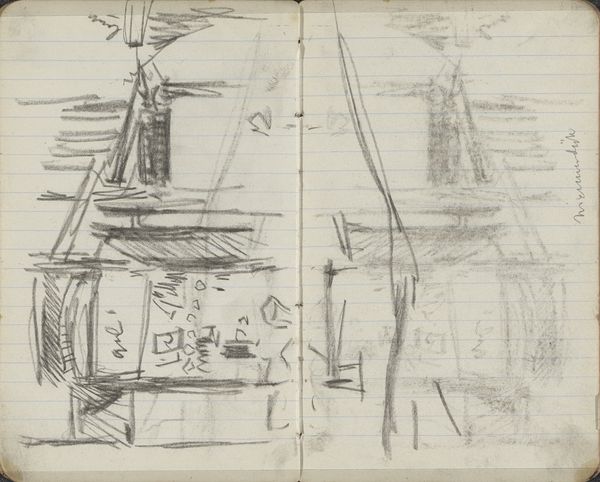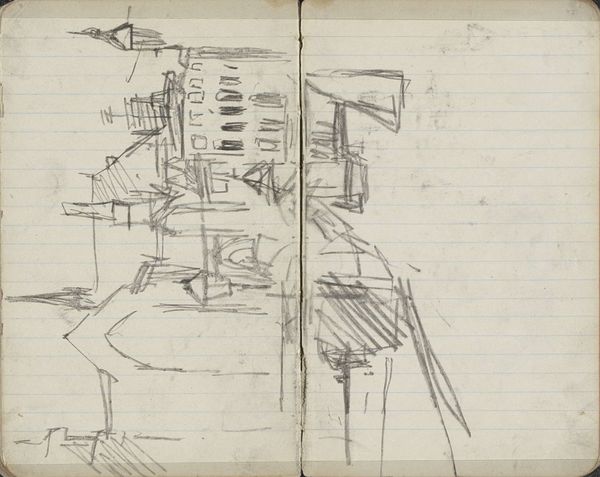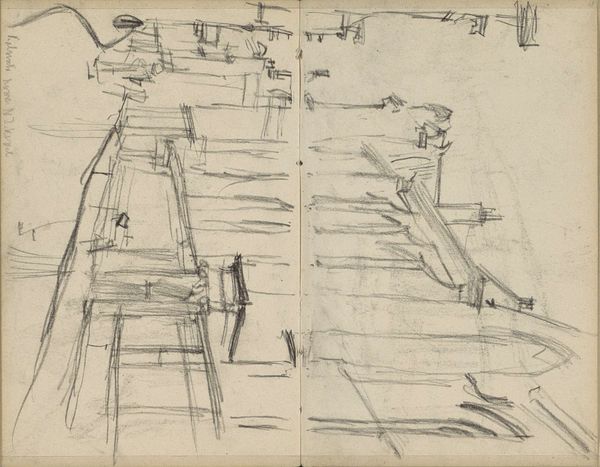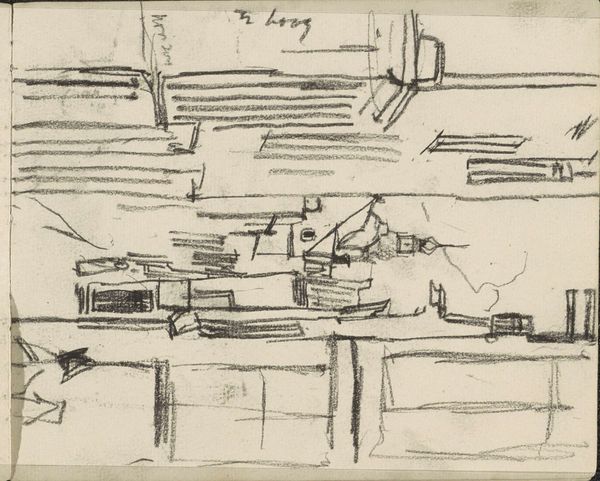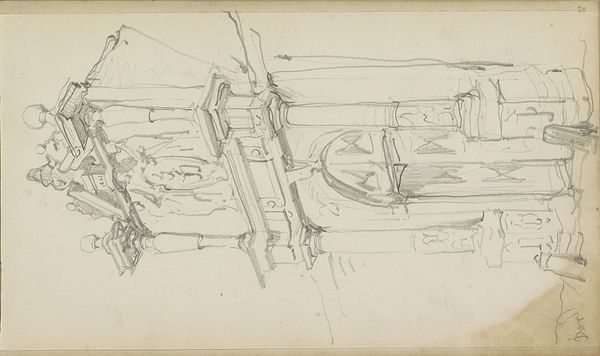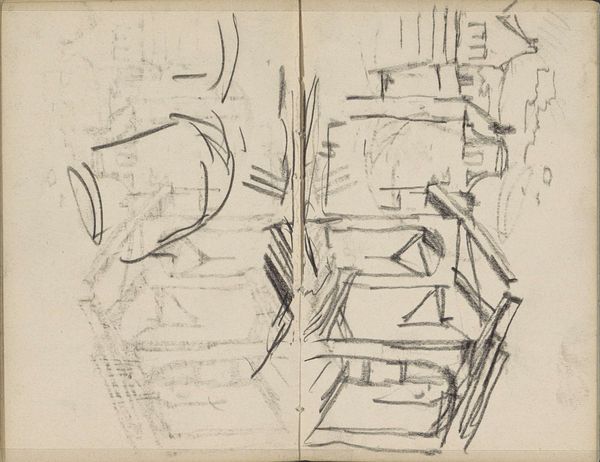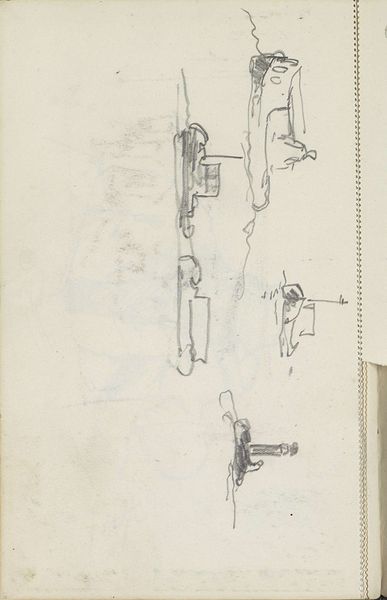
Copyright: Rijks Museum: Open Domain
Curator: Before us we have a sketchbook page by George Hendrik Breitner, titled "Gezicht op de Nieuwendijk te Amsterdam," dating from around 1894. The materials are graphite and pen on paper, and what's quite interesting is the use of the sketchbook itself as an integral element of the composition. Editor: Ah, my first impression is… elusive. Like a half-remembered dream of Amsterdam. It's there, the suggestion of bustling city life, but fragmented, softened by time and the artist's quick hand. I can almost smell the damp canals. Curator: Exactly, Breitner's work here beautifully demonstrates the immediacy of Impressionism. He’s captured a fleeting moment on the Nieuwendijk. Think about the urban expansion happening at the time and how mass production impacted leisure, artistic practices and social observation. This loose sketch gives insight into Breitner's creative process. Editor: I’m drawn to the spontaneity of the lines; you see how the city seems to emerge and fade simultaneously? It’s like he’s caught the rhythm of Amsterdam—the push and pull, the noise and the fleeting moments of quiet contemplation found in the middle of chaos. There is an almost melancholy mood about the incompleteness that feels really poignant. Curator: Breitner’s sketchbooks, these tools, were an essential part of his method, allowing him to quickly capture observations. It gives you a direct link to 19th century material culture. Editor: Right. There is also this charming notion of finding art not in the perfectly finished product, but in these personal, intimate glimpses into the artist's vision. As if we stumbled across a private diary. The imperfection of the work is almost more inviting to my imagination, you know? Curator: Absolutely. It is a valuable document of an artistic practice situated in the dynamic socio-economic climate of the time. Editor: Well, seeing this work has stirred up an old daydream: what if we could all see our own lives as fleeting sketches, allowing us a kinder, looser perspective? Curator: A lovely idea to conclude on. For me, it shows how the infrastructure of artmaking and mass culture were linked, with the sketch book page almost mirroring the ephemeral and transient qualities of modernity itself.
Comments
No comments
Be the first to comment and join the conversation on the ultimate creative platform.



